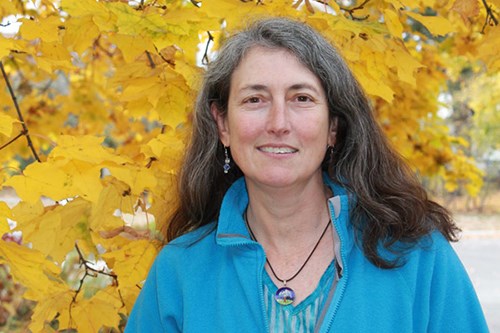Last updated: June 16, 2020
Article
International Day of Women and Girls in Science Highlight: Carol Miller, Wilderness Fire Scientist

The International Day of Women and Girls in Science is celebrated on February 11th.
In the spirit of this day, the National Park Service Wilderness Stewardship Division (WSD) recognizes and celebrates the important contributions of women scientists. So let’s meet a scientist!
Carol Miller is a Research Ecologist at the interagency Aldo Leopold Wilderness Research Institute in Missoula, MT. The Institute is comprised of an interdisciplinary team of scientists that lead and coordinate high priority research projects for the National Wilderness Preservation System agencies, which include the National Park Service, Bureau of Land Management, US Fish and Wildlife Service, and US Forest Service. Miller’s research work focuses on wilderness fire; “I am interested in developing a better understanding of the role of wildland fire as a natural ecosystem process and applying that knowledge to help guide the stewardship of this process in wilderness,” says Miller.
In celebration of International Day of Women and Girls in Science, Miller shared her thoughts on a few related questions:
Q: How did you become a researcher?
A: The National Park Service Global Change Research Program funded my Colorado State University graduate research. In that research, I developed and used a simulation model to study the interactions among climate, fire, and forest pattern in the Sierra Nevada of California. I didn’t have an advisor yet when I saw a flyer advertising for a graduate research assistant. I knocked on Dean Urban’s door [university professor] and when he found out I could code in the same computer language he did, my fate was sealed: it turned into an easy path to the Institute. Once here, why would I leave?
Q: What sort of research do you do at the Institute?
A: My research is in the fields of fire ecology and landscape ecology. Two general aims of my research are: 1) what can we learn about fire that will help with the management of fire in wilderness (“science for wilderness”), and 2) what can we learn by studying wilderness to better understand natural fire regimes and manage fire (“wilderness for science”). For example, with “science for wilderness,” I’ve studied the hidden consequences of fire suppression. When a natural ignition is suppressed, the opportunities for that fire to play its role in the ecosystem are taken away; I have developed ways to quantify those foregone opportunities. With “wilderness for science,” we’ve been able to study a collection of wilderness areas where fires are typically not suppressed, and have learned how fires can serve as a fuel break for future fires.
Q: What is like to be a woman involved in wilderness fire work?
A: This is difficult to answer because I don’t think about this very much. My short-lived first career was in engineering, and compared to engineering, there are lots of women scientists in the natural resources field. I do feel respected by my peers. At least one graduate student sought me out because of my gender and that relationship has led to several fruitful collaborations with researchers (men and women) I may not have otherwise met. And I don’t know if it’s related to gender, but I have spent a lot of energy making sure that good scientists who work for me can advance and succeed in their career path.
Q: What is it like to work in wilderness fire?
A: Interacting with wilderness managers is super rewarding and inspiring because they are really passionate about stewardship. I’ve had the privilege to get to know a cohort of mostly now-retired wilderness fire managers who pioneered a paradigm shift that led to our current policies of allowing fires to burn for their ecological benefits. What they did had profound impact and took amazing courage.
Interested in learning more about Carol Miller’s work? Visit the Aldo Leopold Wilderness Research Institute website for more information.
To learn more about wilderness and fire in the National Park Service, visit:
